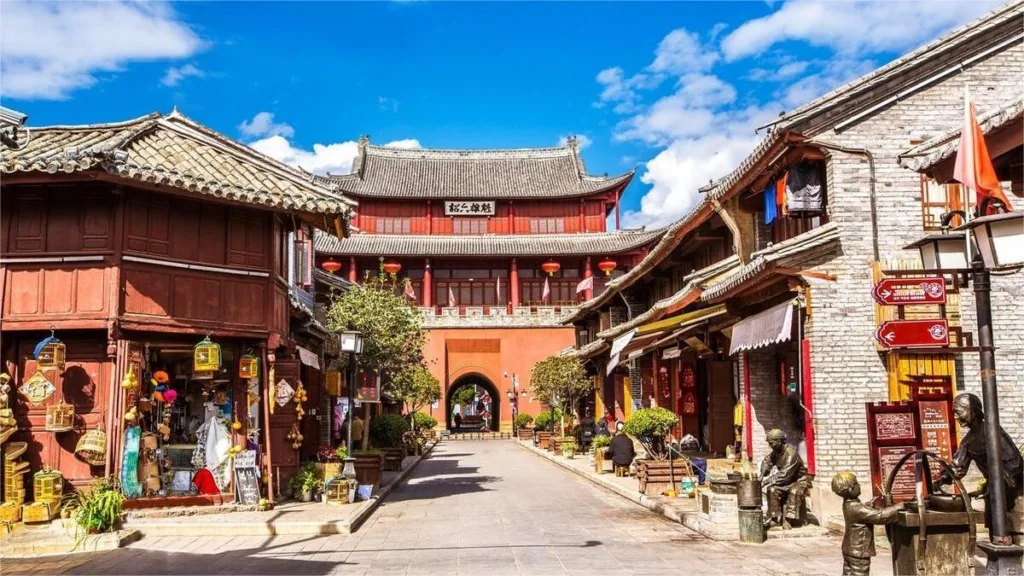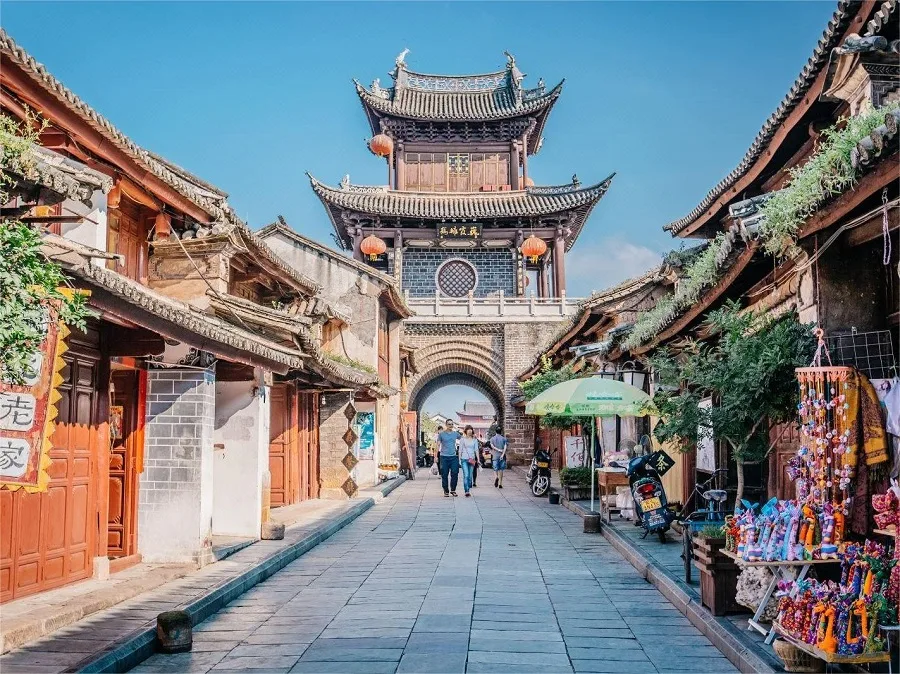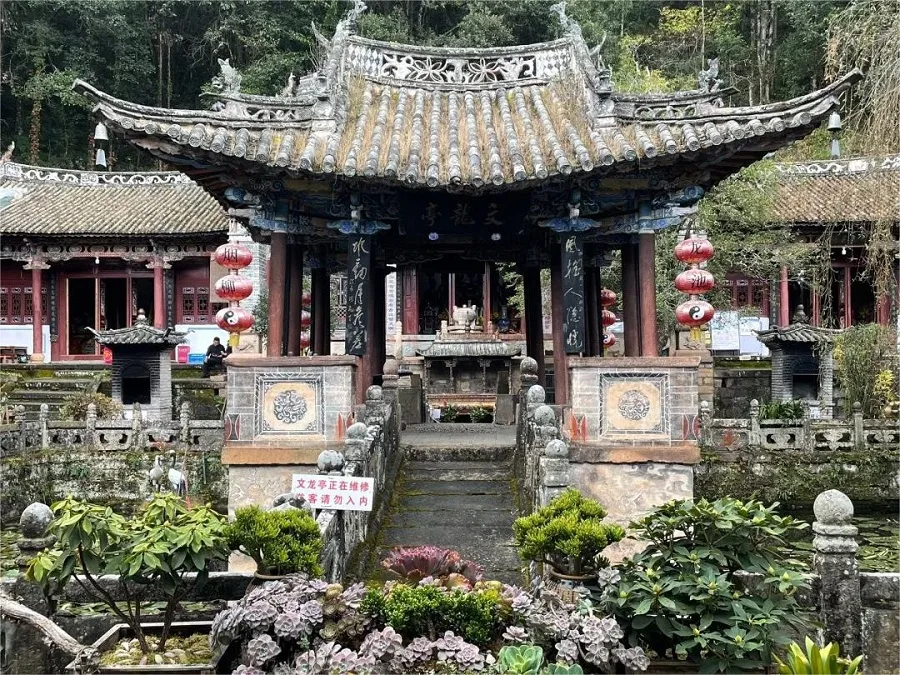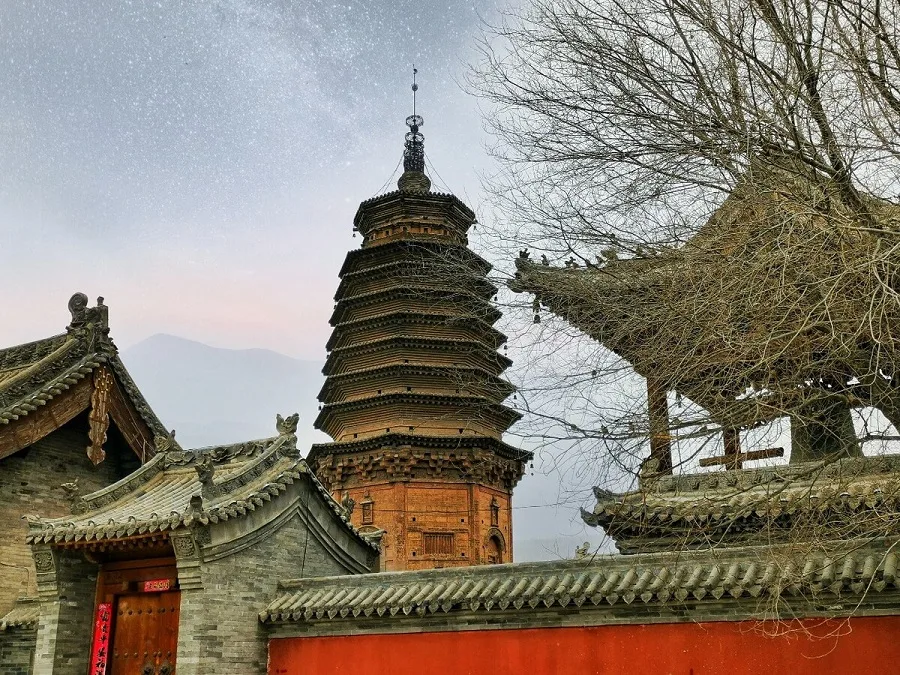Casco antiguo de Weishan - Entradas, horarios, ubicación y puntos destacados


Located at the foot of the Ailao Mountains in western Yunnan, Weishan Old Town (巍山古城) dates back to the Yuan Dynasty and was reconstructed with brick walls during the Ming Dynasty. It served as the birthplace of the Nanzhao Kingdom and was one of the regions where the Tusi system, a system of governance, was implemented in Yunnan for the longest period. Its rich history has nurtured numerous temples and monasteries, which harmonize with the diverse natural landscapes, creating a picturesque blend.
The streets of Weishan Old Town radiate from the arched city gate, forming a standard grid layout with 25 streets and 18 lanes, stretching over 14 kilometers. The houses within the city mostly adhere to traditional Chinese architectural styles. Along the north-south axis, houses retain the architectural features and styles of the Ming and Qing Dynasties. The orientation of these houses, tilted approximately 15 degrees west of due south, optimizes natural lighting, compensating for the traditional structures’ inherent lack of light.
This town is not only a historical relic but also a living museum where visitors can immerse themselves in the ambiance of ancient China. The well-preserved architecture, coupled with the town’s cultural and historical significance, makes Weishan Old Town a charming destination for travelers seeking to delve into the rich tapestry of Yunnan’s past.
Índice
Información básica
| Duración estimada de la visita | 1 día |
| Precio del billete | Town: Free Weibao Mountain: 40 RMB |
| Horario de apertura | 24 horas al día durante todo el año |
| Número de teléfono | 0086-0872-6121470 0086-0872-6120893 |
Ubicación y transporte
Weishan Old Town is situated in Weishan Yi and Hui Autonomous County, Dali Bai Autonomous Prefecture, western Yunnan, at the foothills of the Ailao Mountains and the headwaters of the Red River.
En autobús: From Dali Xiaguan (Dali Express Bus Station), travelers can take a bus to Weishan Bus Station, with a journey lasting approximately 1.5 to 2 hours and costing around 17 yuan.
By High-Speed Train (CRH): Alternatively, travelers can opt for the high-speed train from Dali Station to Weishan Station, with a travel time of 20 to 30 minutes and a ticket price of around 22 yuan. Upon arrival at Weishan Station, a taxi ride of approximately 8 yuan will take visitors directly to Weishan Old Town.
Highlights of Weishan Old Town
Ancient City Walls, Gates and Towers

Weishan Old Town is enveloped by sturdy city walls punctuated by four imposing gates facing east, west, south, and north. At the heart of the town lies the iconic Star Arch Tower, marking the central point of the ancient city. The town’s layout adheres to a grid pattern resembling a chessboard, with 25 streets and 18 lanes intersecting to create a labyrinthine network of thoroughfares. The northern gate, known as Gongchen Tower, was constructed during the Ming Dynasty and stands as a testament to the town’s historical fortifications. Adorned with intricate architectural details, including a double-eaved hip-and-gable roof, the tower commands attention with its grandeur. Inscriptions such as “魁雄六诏” (meaning “the mighty leader among six nations”) on the southern facade and “万里瞻天” (translating to “overseeing thousands of miles”) on the northern facade add to the majestic ambiance. Ascending the tower offers panoramic views of the town below, with its bustling streets and traditional dwellings sprawled out in all directions, offering a captivating glimpse into Weishan’s rich heritage.
Weibao Mountain

Among the fourteen renowned Daoist mountains in China, Weibao Mountain stands out as a cultural and natural treasure trove. Home to a staggering twenty-two Daoist temples dating back to the Qing Dynasty, Weibao Mountain boasts an unparalleled architectural grandeur that reflects the distinctive ethnic characteristics of the region. Highlights include the unique Ba Gua architectural style of the Changshou Cave, intricately carved Eight Immortals Crossing the Sea reliefs adorning the temple gates, and elaborately crafted dragon motifs embellishing the ceilings of the main hall. Designated as one of Yunnan’s first national forest parks, Weibao Mountain is cloaked in lush greenery, with forest coverage reaching an impressive 85.2%. The mountain’s silhouette, resembling a majestic lion overlooking the ancient town and Guajiang River, adds to its allure, while the reservoir and dam at its base serve as a picturesque backdrop, reflecting the ethereal beauty of the surrounding landscape.

Weibao Mountain holds immense historical significance as the birthplace of the Nanzhao Kingdom, the ancestral homeland of its founding monarch, Ninuluo. The legendary Tu Zhu Temple (also known as “Xunshan Hall”), believed to be Xinuluo’s ancestral temple, stands as a testament to the region’s ancient origins. As the largest and oldest Tu Zhu temple in China, it serves as the focal point of Yi ethnic worship, drawing throngs of worshippers who gather annually on the fifteenth and sixteenth days of the lunar calendar, as well as on September 14th, to honor their founding ancestor with elaborate sacrificial rituals.
Yuanjue Temple

Nestled amidst lush greenery, Yuanjue Temple is a serene sanctuary with over five centuries of history. Renowned Ming Dynasty scholar Yang Shen once resided here and inscribed two pairs of couplets on the main hall. Flanked by towering ancient cypresses, the temple boasts a pair of pagodas soaring approximately 15 meters high, with nine tiers crowned by precious finials, presenting a square brick structure with intricate eaves. Facing the city with its back against the mountain, visitors ascend through the mountain gate, traversing three courtyards before reaching the summit, where the Four Heavenly Kings Hall, Mahavira Hall, and rear hall await. The meticulous architectural arrangement of the entire temple complex exudes a sense of harmony and grace.
Ethnic Cultural Heritage

Weishan is home to six indigenous ethnic groups, including the Han, Yi, Hui, Bai, Miao, and Susu, each contributing their distinct customs and vibrant traditions. The Yi ethnic group’s drum dances showcase their robust and spirited style, particularly during the Torch Festival when people from all corners gather around bonfires, creating a lively atmosphere with rhythmic drumming and exuberant performances. The renowned Weishan Yi Drum Dance Troupe has even performed in Beijing and Japan, garnering acclaim for their energetic displays. Another cultural gem of Weishan is its “Dongjing music,” a traditional form of folk music that has received widespread praise for its unique melodies and rhythms. Weishan’s tie-dyeing, characterized by traditional ethnic craftsmanship, has been honored by the Ministry of Culture as the “Hometown of Chinese Tie-dye Art,” showcasing the region’s rich heritage of textile artistry.
Atracciones de Dalí, Lugares históricos de Yunnan